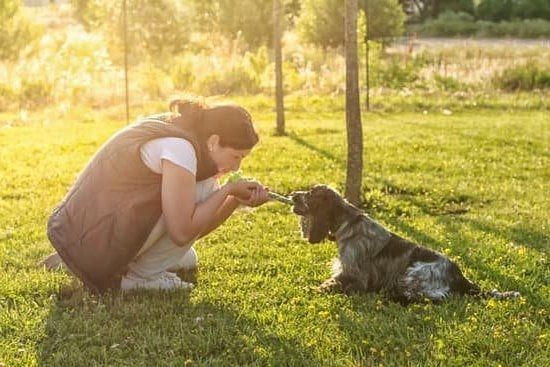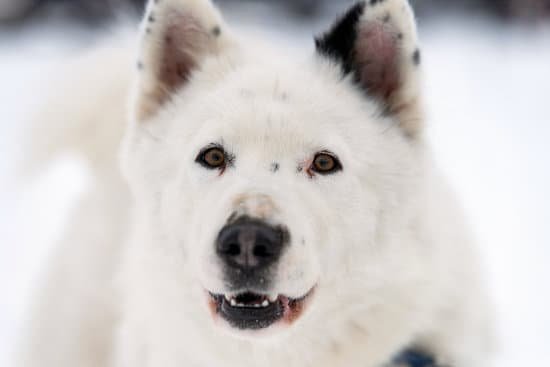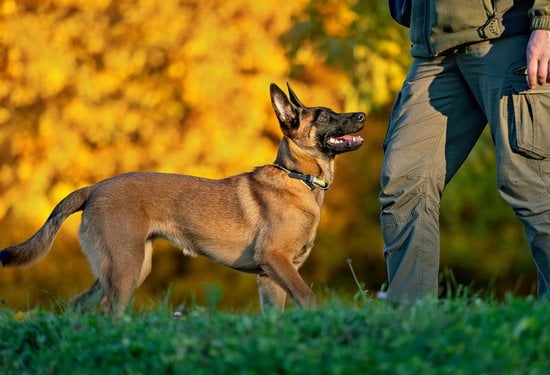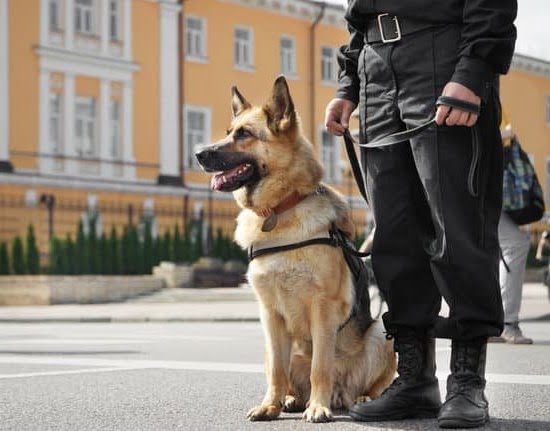Can older dogs be trained as service dogs for anxiety? Service dogs play a crucial role in providing support and comfort to individuals suffering from anxiety disorders. These specially trained companions are capable of detecting and responding to their owner’s anxiety, offering a sense of security and help when needed.
However, the common belief is that only young dogs can be trained for service work. This article will explore whether older dogs can indeed be trained to provide this valuable support.
The process of training older dogs for service work comes with its own set of challenges and advantages. Age might impact an older dog’s ability to learn new tasks and adapt to specific requirements for anxiety support. However, these senior animals may possess the temperament traits and qualities necessary to excel in this role. Understanding the unique considerations surrounding training older dogs for service work is essential in evaluating their suitability for anxiety support.
When considering an older dog for service work, it becomes crucial to evaluate their health and mobility, as well as potential limitations or concerns that may arise due to aging. Additionally, implementing effective training techniques such as positive reinforcement and specialized anxiety support training can significantly contribute to the success of older dogs in their service role. Stay tuned as we delve into these topics further in the sections ahead.
The Process of Training Older Dogs
However, there are also challenges associated with training older dogs. Age-related health issues and decreased mobility can impact an older dog’s ability to undergo intensive training or perform certain tasks required of service animals. It is essential to carefully evaluate the overall health and physical condition of an older dog before embarking on service dog training for anxiety support. This may involve consulting with a veterinarian to ensure that the dog is fit for such rigorous training.
When it comes to training techniques for older dogs, positive reinforcement methods have been found to be particularly effective. Older dogs often respond well to praise, treats, and gentle encouragement, making positive reinforcement an ideal approach for teaching them new skills. In addition to basic obedience training, specialized anxiety support training should be tailored to meet the specific needs of individuals suffering from anxiety disorders.
| Advantages | Challenges |
|---|---|
| Already developed desirable characteristics | Age-related health issues |
| Calmness, empathy, attentiveness | Decreased mobility |
| More settled demeanor | Intensive training limitations |
The Qualities of a Good Service Dog
When it comes to training older dogs for service work, particularly for anxiety support, it is essential to understand the specific qualities and temperament traits that make a dog suitable for this type of role. While younger dogs are often the focus of service dog training programs, older dogs can possess many of the same qualities that are desirable for providing support to individuals with anxiety disorders.
Temperament Traits
One of the most important qualities in a service dog for anxiety is a calm and gentle temperament. Dogs that are naturally empathetic, patient, and able to remain composed in various environments are ideal candidates for this type of work. Older dogs often exhibit these traits due to their maturity and life experience, making them well-suited for providing emotional support to individuals experiencing anxiety.
Adaptability and Sensitivity
Service dogs for anxiety must also be adaptable and sensitive to their owner’s needs. They should be able to pick up on cues signaling their owner’s distress or discomfort, and respond accordingly by providing comfort and reassurance. Older dogs have typically developed a heightened sense of awareness and understanding of human emotions over time, which can be advantageous when it comes to providing effective support for individuals with anxiety.
Reliability and Stability
Reliability and stability are crucial traits in a service dog for anxiety, as they need to consistently be there for their owner during times of distress. Older dogs often demonstrate a greater level of stability compared to younger dogs due to their maturity and life experiences. This can translate into a more reliable source of comfort and support for individuals struggling with anxiety.
Age and Health Considerations
Evaluating an Older Dog’s Health
When considering older dogs for service work, it is crucial to conduct a thorough evaluation of their health. This involves assessing their physical condition, any pre-existing medical conditions, and their overall mobility. Older dogs may be more susceptible to certain health issues such as arthritis, mobility problems, or age-related cognitive decline. It’s important to ensure that the dog is in good enough health to handle the demands of being a service animal for anxiety support.
Potential Limitations or Concerns
While many older dogs are capable of being trained as service animals for anxiety, there are potential limitations and concerns that need to be taken into account. Mobility issues, pain from arthritis or other age-related conditions, and reduced energy levels may impact an older dog’s ability to perform certain tasks consistently. Additionally, some older dogs may have established behavior patterns that could potentially interfere with their training for anxiety support work.
Adapting Training and Responsibilities
It’s essential for owners and trainers to adapt the training and responsibilities of an older dog based on their individual health needs. This may involve modified training techniques, shorter training sessions to accommodate reduced stamina, as well as providing additional support in managing any age-related health issues. With proper adjustments and awareness of potential limitations, many older dogs can still thrive in their role as service animals for anxiety support.
Training Techniques for Older Dogs
Training older dogs for service work, particularly for anxiety support, requires a patient and understanding approach. While older dogs may present some challenges in the training process, they also bring a level of maturity and calmness that can be beneficial for individuals in need of emotional support. Here are some effective training techniques for older dogs, including positive reinforcement and specialized anxiety support training:
- Positive Reinforcement: Utilizing positive reinforcement techniques such as treats, praise, and rewards to reinforce desired behaviors in older dogs. This method focuses on encouraging the dog’s good behavior rather than punishing their mistakes, creating a more positive and productive learning environment.
- Consistency: Maintaining consistency in training methods and expectations is crucial when working with older dogs. Establishing clear routines and boundaries helps the dog understand what is expected of them, leading to more effective training outcomes.
- Desensitization Training: Implementing desensitization techniques to gradually expose the older dog to various anxiety triggers in a controlled and supportive manner. This can help the dog become acclimated to stressful situations and learn how to provide comfort and reassurance to their owner during times of distress.
In addition to general training techniques, specialized anxiety support training can be particularly beneficial for older dogs being prepared for service work. This type of training focuses on specific behaviors and responses that are helpful for individuals dealing with anxiety disorders. Some examples of specialized anxiety support training techniques include:
- Calm Behavior Reinforcement: Teaching the older dog how to exhibit calm behaviors in response to their owner’s anxiety symptoms. This may involve practices such as deep pressure therapy or providing physical comfort during moments of distress.
- Awareness of Owner’s Needs: Training the dog to be attentive and responsive to their owner’s emotional state, recognizing signs of anxiety or panic attacks, and offering comfort or intervention as needed.
- Create Safe Spaces: Guiding the older dog to recognize safe spaces where their owner can go during moments of heightened anxiety, as well as teaching them how to lead their owner to these designated areas when necessary.
By incorporating these effective training methods into the preparation of older dogs for service work as anxiety support animals, it becomes possible to unlock their potential for making meaningful contributions towards alleviating the symptoms experienced by individuals struggling with anxiety disorders.
Success Stories
One success story involves a 9-year-old Labrador Retriever named Max, who was trained to assist his owner with panic attacks and anxiety episodes. Despite his age, Max showed incredible dedication and quickly learned how to provide comfort and support during moments of distress. His owner has expressed that Max’s presence has been life-changing, allowing them to feel more confident and secure when facing challenging situations.
Another heartwarming tale is that of Bella, an 8-year-old rescue dog who became a trained service animal for anxiety. Bella’s gentle nature and empathetic demeanor make her an ideal companion for her owner, who struggled with severe anxiety. Through specialized training and consistent support, Bella has become an essential part of their owner’s mental health management plan, offering unwavering companionship and emotional assistance.
These stories highlight the potential of older dogs to excel in service roles for anxiety support, debunking the misconception that only young dogs can fulfill these duties. The bond formed between these aging dogs and their owners serves as a testament to the profound impact that senior canine companions can have on individuals experiencing anxiety disorders.
| Service Dog | Breed | Age at Training | Impact on Owner |
|---|---|---|---|
| Max | Labrador Retriever | 9 years old | Life-changing; increased confidence and security during panic attacks |
| Bella | Mixed Breed (rescue) | 8 years old | Essential part of mental health management plan; provides unwavering companionship and emotional assistance. |
Legal and Certification Requirements
When considering training older dogs to become certified service animals for anxiety support, it is important to understand the legal and certification processes involved. The rights and responsibilities that come with this designation are significant, and it’s essential to be well-informed when navigating this aspect of the training process. Here is an overview of the legal and certification requirements for older dogs to become certified service animals:
- Legal Requirements: Under the Americans with Disabilities Act (ADA), service animals are defined as dogs that are individually trained to do work or perform tasks for a person with a disability. This means that in order for an older dog to be legally recognized as a service animal, they must undergo specialized training to assist individuals with anxiety disorders.
- Certification Process: While there is no specific certification or registration required for service animals under the ADA, some organizations offer voluntary certification programs. These programs can provide additional credibility and documentation of a dog’s training and abilities as a service animal.
- Rights and Responsibilities: Once an older dog has been certified as a service animal for anxiety support, they have the right to accompany their owner in all public areas where pets are typically not allowed. However, it is important for owners to responsibly manage their service animal in public spaces and ensure they are well-behaved and under control at all times.
It’s important to note that while there are legal protections in place for individuals with disabilities who rely on service animals, it is also crucial for owners of older dogs undergoing training to familiarize themselves with local regulations and ordinances regarding service animals. Additionally, understanding the specific rights and responsibilities associated with having a certified service dog for anxiety can help ensure a positive and successful experience for both the dog and their owner.
Finding and Working With Professional Trainers
In conclusion, while training older dogs for service work, especially as anxiety support animals, may present certain challenges, it is certainly possible with the right approach and mindset. By carefully evaluating an older dog’s health and mobility, identifying their temperament traits that make them suitable for anxiety support work, and utilizing effective training techniques such as positive reinforcement and specialized anxiety support training, it is possible to successfully train older dogs for this important role.
Finding experienced trainers who specialize in working with older dogs for service work is crucial in this process. These professionals can provide the necessary knowledge, skills, and resources to guide both the dog and their owner through the training process.
It is important for owners to seek out trainers who understand the unique needs of older dogs and can tailor their approach accordingly. Additionally, a collaborative approach between the trainer, dog, and owner will be instrumental in ensuring the success of the training program.
Ultimately, success stories of older dogs who have been trained as service dogs for anxiety serve as a testament to the potential of these animals to make a positive impact on individuals suffering from anxiety disorders. With careful consideration of an older dog’s capabilities, proper training methods, and collaboration with experienced professionals, it is indeed possible for older dogs to fulfill this important role with dedication and compassion.
Frequently Asked Questions
What Disqualifies a Dog From Being a Therapy Dog?
A dog can be disqualified from being a therapy dog if they exhibit aggressive behavior, excessive shyness, or easily get overstimulated in new environments. Additionally, if a dog has a history of biting or aggressive behavior, they may not be suitable for the role of a therapy dog.
What Are Three Qualities a Dog Must Have to Be a Service Dog?
Three qualities that a dog must have to be a service dog include excellent obedience and training, good social skills, and the ability to remain calm under various stressful situations. Service dogs need to be able to focus on their handler’s needs and perform specific tasks to assist them with their disabilities.
What Are the Commands for Service Dogs With Anxiety?
The commands for service dogs with anxiety often include “watch me” to redirect their attention when feeling anxious, “leave it” to avoid fixating on an anxiety trigger, and “settle” to encourage the dog to relax and calm down when feeling stressed or agitated.
These commands help service dogs with anxiety cope with their emotions and provide support for their handlers in various situations.

Welcome to the blog! I am a professional dog trainer and have been working with dogs for many years. In this blog, I will be discussing various topics related to dog training, including tips, tricks, and advice. I hope you find this information helpful and informative. Thanks for reading!





